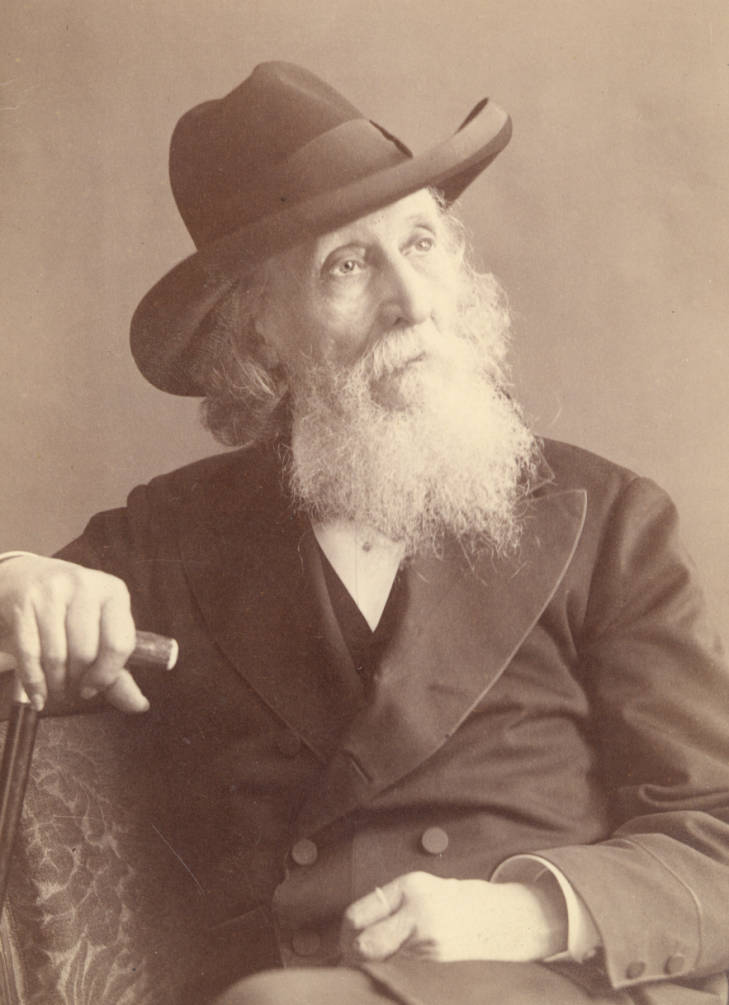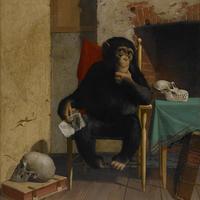More about James Henry Beard
Works by James Henry Beard

Sr. Contributor
James Henry Beard may not have been destined to be an artist; his career probably came about out of necessity more than any other reason.
His father died when Beard was just eleven years old, and Beard helped to support the family while learning to paint portraits. Beard was mostly self-taught, but he also learned from a local school teacher, before going to work with an itinerant painter named Jarvis Frary Hanks. While he was still learning, Beard set himself apart from his competition in the small towns of Ohio by pricing his portraits at significantly lower prices; when another artist charged $10 to $15 a head, Beard would charge $3 to $5. With greater experience, though, he eventually worked himself up to the $15 price. Beard may have been thinking about this time in his life when many years later, in 1846, he painted The Young Itinerant, on display at the Museum of Fine Arts Houston. It may be a self-portrait or just the way he saw himself at the time.
Beard was born in New York, and his family moved to Ohio when James was seven. They would again move several times while there, eventually settling in the town of Painesville. By the time he was seventeen, Beard had started to work in Pittsburg with James Reid Lambdin, an artist who opened his own natural history museum and art gallery. He didn’t stay there long, though; the next place he traveled to was Cincinnati, where he established himself as a portrait and genre painter. He seems to have used that city as a base from which he would roam to others, including New Orleans and Louisville. He would finally settle down in New York, but not until 1870.
Between his traveling and painting, Beard enlisted in the Union Army when the Civil War broke out. He was around 50 years old and was ranked as a Captain. He used his war experiences to paint The Night Before the Battle, a very different subject than those he usually worked on. This piece was finished in 1865, the last year of the Civil War, and could be construed as an anti-war statement or about the continuous specter of death hanging in the air during this time.
After the war, in addition to his more well-known portraits, Beard became recognized as a painter of animals. His younger brother, William Holbrook Beard, (whom James Beard had taught painting when they were younger) was already doing animal paintings, so it wasn’t a huge leap for James to take a shot at it too. These weren’t your run-of-the-mill portraits of family pets (although he did some of those); many of the Beard brothers' animal paintings depicted animals in human roles. Beard was probably familiar with the 16th-century genre called singerie, from the French for "monkey tricks,” or “monkey games." In these paintings, monkeys usually take on a human persona, sometimes wearing human clothes and hats, though other animals could be used as well. In Beard’s case, he preferred to use dogs and cats, with an occasional monkey thrown in, such as the one in, "It Is Very Queer, Isn't It?" at the Crystal Bridges Museum of American Art.
Beard is also known for a few paintings that show a side of Western emigration that was not all roses and sunshine. Works like North Carolina Emigrants: Poor White Folks, and Western Squatters are the best examples. Even the titles for these paintings sound depressing, but they were probably a lot closer to the reality many families faced as they made their way across the country to the “promised land.”
Sources
- "American Painters. James H. Beard." The Art Journal (1875-1887), New Series, 1 (1875): 366-68. http://0-www.jstor.org.pacificatclassic.pacific.edu/stable/20568807.
- Husch, Gail E. ""Poor White Folks" and "Western Squatters": James Henry Beard's Images of Emigration." American Art 7, no. 3 (1993): 15-39. http://0-www.jstor.org.pacificatclassic.pacific.edu/stable/3109111.
- “James Henry Beard.” Oxford Reference. https://www.oxfordreference.com/view/10.1093/oi/authority.2011080309545…
- “James H. Beard: LACMA Collections.” James H. Beard | LACMA Collections. https://collections.lacma.org/node/164801.
- “James Reid Lambdin.” National Gallery of Art. https://www.nga.gov/collection/artist-info.1452.html.
- PENNINGTON, ESTILL CURTIS, and ELLEN G. MILES. "JAMES HENRY BEARD: (1812–1893)." In Lessons in Likeness: Portrait Painters in Kentucky and the Ohio River Valley, 1802-1920, 108-09. University Press of Kentucky, 2011. http://0-www.jstor.org.pacificatclassi
- “SEEING AMERICA: James Henry Beard’s The Night Before the Battle, 1865.” University of Rochester, n.d. https://mag.rochester.edu/seeingAmerica/pdfs/18.pdf.
Featured Content
Here is what Wikipedia says about James Henry Beard

James Henry Beard (April 22, 1812 – October 20, 1893) was an American painter who specialized in the genre of portraits. He was elected as a member of the National Academy of Design in 1872.
Check out the full Wikipedia article about James Henry Beard











